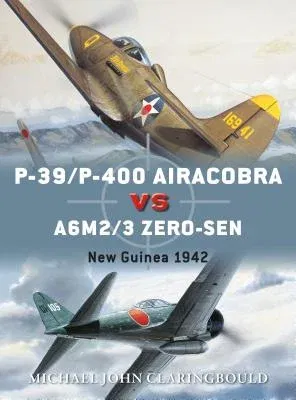Michael John Claringbould
(Author)P-39/P-400 Airacobra Vs A6M2/3 Zero-Sen: New Guinea 1942Paperback, 24 July 2018

Qty
1
Turbo
Ships in 2 - 3 days
Only 2 left
Free Delivery
Cash on Delivery
15 Days
Free Returns
Secure Checkout

Part of Series
Duel
Print Length
80 pages
Language
English
Publisher
Osprey Publishing (UK)
Date Published
24 Jul 2018
ISBN-10
1472823664
ISBN-13
9781472823663
Description
Product Details
Author:
Book Format:
Paperback
Country of Origin:
US
Date Published:
24 July 2018
Dimensions:
24.64 x
18.54 x
0.51 cm
Illustrators:
ISBN-10:
1472823664
ISBN-13:
9781472823663
Language:
English
Location:
New York
Pages:
80
Publisher:
Series:
Weight:
272.16 gm